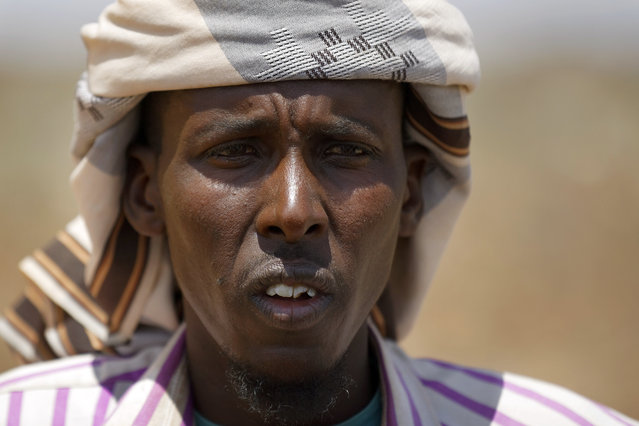
In this photo taken Wednesday, March 8, 2017, herder Ahmed Haji, 30, recounts how he trekked thousands of kilometers with his herd in search of greener pasture in a remote desert area near Bandar Beyla in Somalia's semiautonomous northeastern state of Puntland. Ahmed Haji turns from his visibly dehydrated animals and whispers: “I am lost”. Trying to flee the worsening drought, he trekked thousands of kilometers with a herd that once numbered 1,200. But hundreds perished during the arduous trip to Puntland, in northern Somalia, in search of greener pasture. The land here dried up not long after he arrived, leaving his animals weak from hunger and thirst. “They are now dying one by one”, the 30-year-old said, shading his face from the scorching sun. His goats drank water from a plastic barrel and picked dry leaves from plants nearby. “I don't even think these remaining ones will survive in the next two months”, Haji said. He left his wife and five children behind on his eight-day trek, fearing they wouldn't survive. Now he wonders about himself. Somalia has declared this drought a national disaster, part of what the United Nations calls the largest humanitarian crisis since the world body was founded in 1945. An estimated 6 million people in this Horn of Africa nation, or about half the population, need aid amid warnings of a full-blown famine. Two consecutive seasons of poor rainfall, longer in some areas, have caused large-scale crop failures, the U.N. humanitarian agency says. It is not clear how many people, or animals, have died so far. Animals are central to many in Somalia. The United Nations says more than half the population is engaged in the livestock industry. The drought threatens their main sources of nutrition and survival. Many wells have dried up, forcing herders to risk long treks to remote areas. Water prices have spiked, with a single water tanker now going for $150. Somalia is part of a massive $4 billion aid appeal launched last month for four nations suffering from conflict and hunger. The others are Nigeria, Yemen and South Sudan, where famine already has been declared in two counties. (Photo by Ben Curtis/AP Photo)
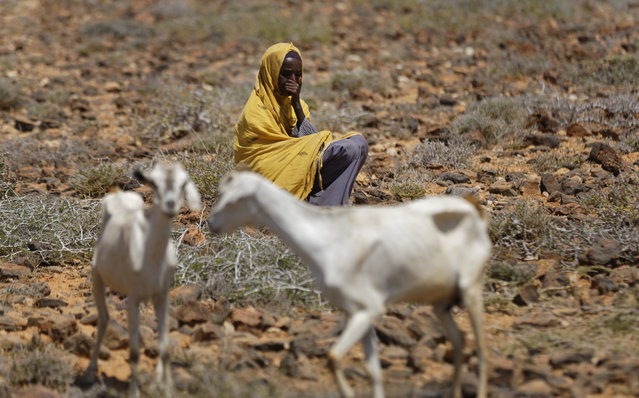
In this photo taken Wednesday, March 8, 2017, a woman herder sits with her goats in a remote desert area near Bandar Beyla in Somalia's semiautonomous northeastern state of Puntland. Somalia has declared the drought a national disaster, part of what the United Nations calls the largest humanitarian crisis since the world body was founded in 1945, and with animals being central to many the drought threatens their main sources of nutrition and survival. (Photo by Ben Curtis/AP Photo)
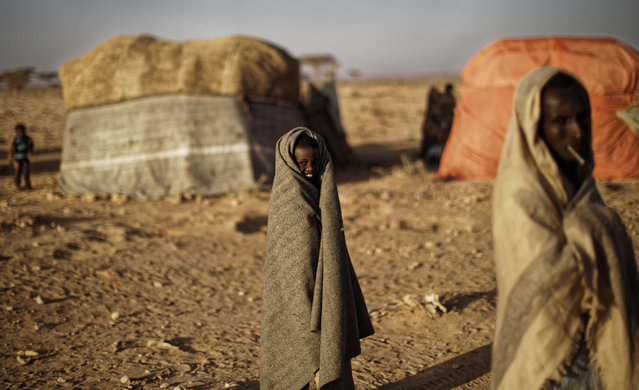
In this photo taken Thursday, March 9, 2017, a boy who fled the drought covers himself with a blanket in front of makeshift huts in a camp for the displaced in Qardho in Somalia's semiautonomous northeastern state of Puntland. (Photo by Ben Curtis/AP Photo)
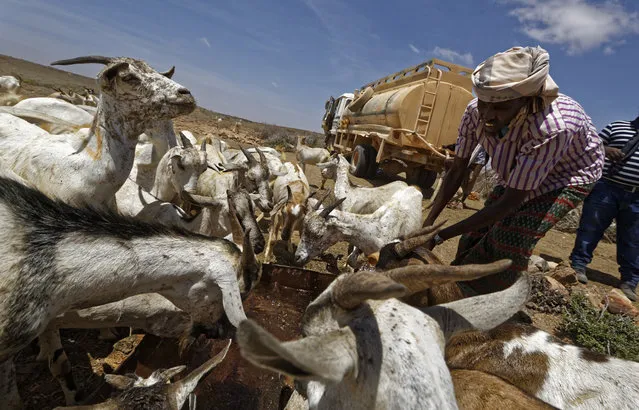
In this photo taken Wednesday, March 8, 2017, herder Ahmed Haji, 30, waters his goats using water trucked in by a tanker in a remote desert area near Bandar Beyla in Somalia's semiautonomous northeastern state of Puntland. (Photo by Ben Curtis/AP Photo)
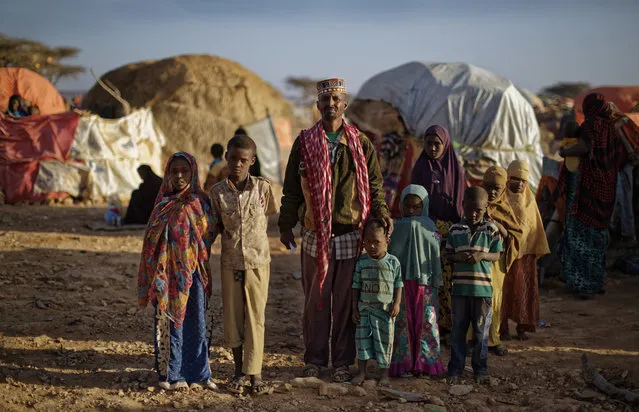
In this photo taken Thursday, March 9, 2017, Ali Hussein, center, and his children who fled the drought stand to be filmed by a television camera in front of their makeshift hut in a camp for the displaced in Qardho in Somalia's semiautonomous northeastern state of Puntland. (Photo by Ben Curtis/AP Photo)
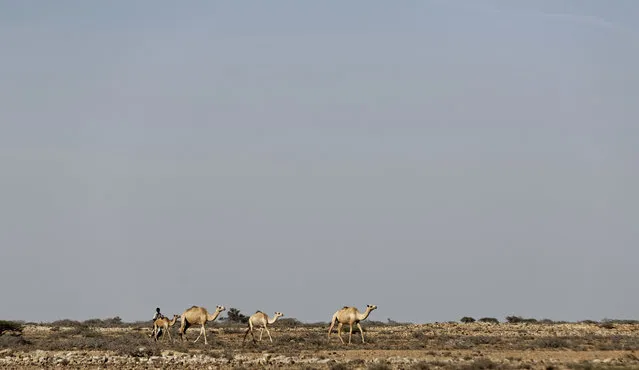
In this photo taken Tuesday, March 7, 2017, a herder drives his camels across the desert near Eyl in Somalia's semiautonomous northeastern state of Puntland. (Photo by Ben Curtis/AP Photo)
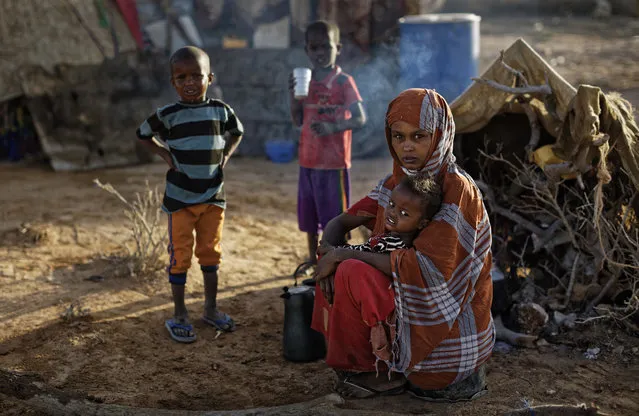
In this photo taken Thursday, March 9, 2017, Fatima Ali and her children, who fled the drought, sit by their makeshift hut in a camp for the displaced in Qardho in Somalia's semiautonomous northeastern state of Puntland. (Photo by Ben Curtis/AP Photo)
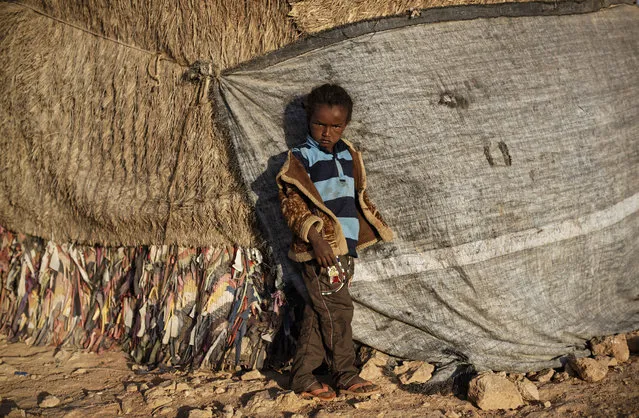
In this photo taken Thursday, March 9, 2017, a boy who fled the drought stands next to the makeshift hut where he sleeps in a camp for the displaced in Qardho in Somalia's semiautonomous northeastern state of Puntland. (Photo by Ben Curtis/AP Photo)
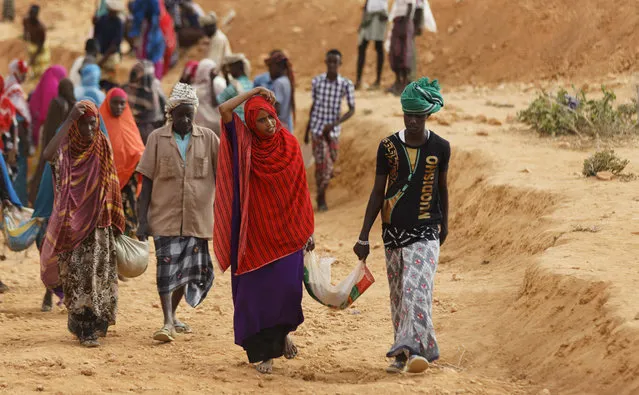
In this photo taken Wednesday, March 8, 2017, women and men carry away earth after digging to build a dam so that if rains do come the water can be stored near Bandar Beyla in Somalia's semiautonomous northeastern state of Puntland. (Photo by Ben Curtis/AP Photo)
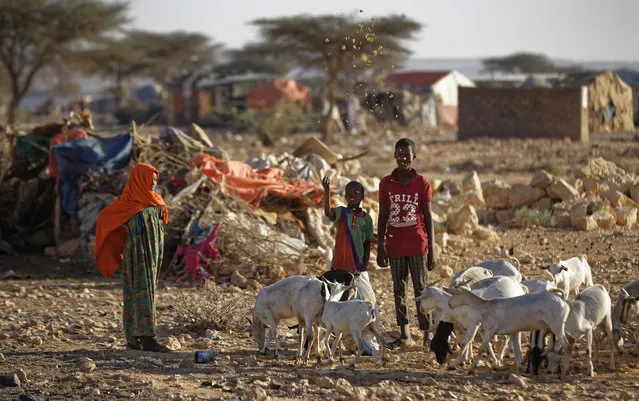
In this photo taken Thursday, March 9, 2017, boys throw food to feed their goats in a camp for the displaced in Qardho in Somalia's semiautonomous northeastern state of Puntland. (Photo by Ben Curtis/AP Photo)
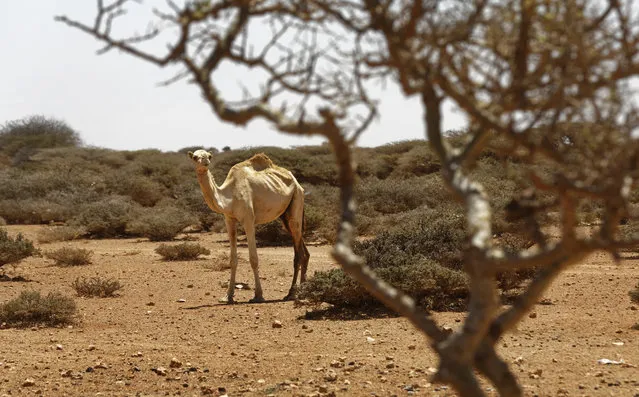
In this photo taken Tuesday, March 7, 2017, a visibly thin camel is seen in the desert near Eyl in Somalia's semiautonomous northeastern state of Puntland. (Photo by Ben Curtis/AP Photo)
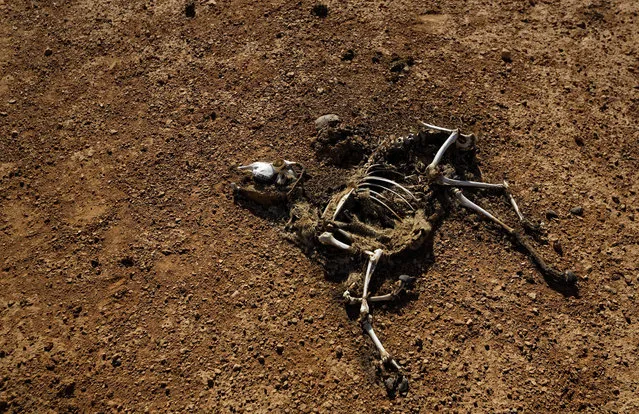
In this photo taken Wednesday, March 8, 2017, the carcass of a dead goat lies in the desert in a drought-stricken area near Bandar Beyla in Somalia's semiautonomous northeastern state of Puntland. (Photo by Ben Curtis/AP Photo)
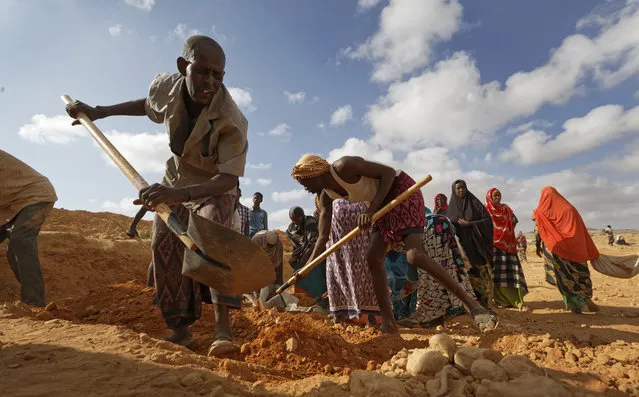
In this photo taken Wednesday, March 8, 2017, men dig with shovels and women take away the earth to build a dam so that if rains do come the water can be stored near Bandar Beyla in Somalia's semiautonomous northeastern state of Puntland. (Photo by Ben Curtis/AP Photo)
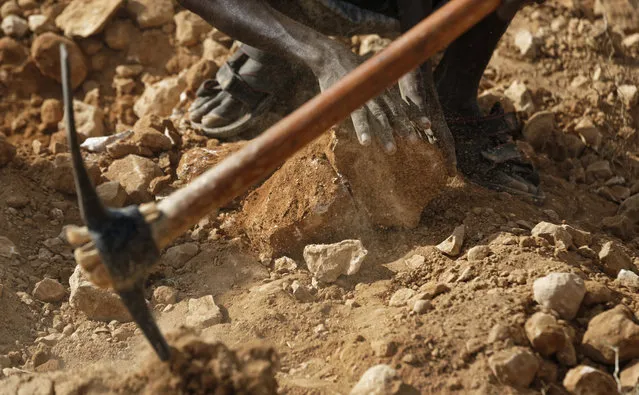
In this photo taken Wednesday, March 8, 2017, men dig with shovels and pickaxes to build a dam so that if rains do come the water can be stored near Bandar Beyla in Somalia's semiautonomous northeastern state of Puntland. (Photo by Ben Curtis/AP Photo)
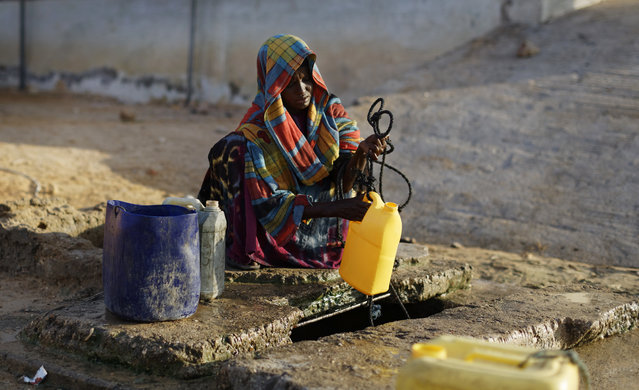
In this photo taken Tuesday, March 7, 2017, a woman takes water from a deep well in Eyl in Somalia's semiautonomous northeastern state of Puntland. (Photo by Ben Curtis/AP Photo)
15 Mar 2017 00:03:00,
post received
0 comments
